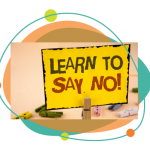What Message Is Your Body Language Sending?
Years ago, I attended an early morning network event. There I met a few new friends — and learned something that changed my life.
Entering the room, I took in my surroundings, including the Continental breakfast buffet table and coffee bar. Standard fare.
But as I surveyed the people in the room, a knot tightened in my stomach. Right off the bat, my eyes were drawn to the real “A-List players” in the room. People gravitated toward them with some sort of invisible magnetic force.
And then there were the “others.” People at the fringes of the room, looking as if they wanted to become invisible altogether.
Where would I fit in? I almost felt I was back in junior high!
Then it dawned on me: No one knows everyone else here. What are the A-List players doing that the wallflowers aren’t? I looked again; the answer became clear. It was the stark difference in their body language. These A-List players exuded confidence in their posture, their gestures, their overall demeanor. The contrast was night and day!
Body language speaks volumes. The messages you convey through body language are often louder than the words you say. Let’s take a closer look.
Power Challenge 1: Understand How Body Language Builds Trust
Why is it that some leaders are able to get others to embrace their vision, engage with them and work toward a common goal? It sounds almost magical, but it’s not. It’s all about trust.
Power Thought:
Leadership is about social influence.
One way that leaders gain trust is through demonstrated confidence. (Let’s face it, would you follow anyone who appeared weak?) They also know how to build engaged relationships. Body language plays a significant role in both.
Is your body language speaking louder than your words?
- Leaning back onto a wall can imply boredom or disinterest. By contrast, leaning into a conversation shows interest or excitement.
- Gazing downward with shoulders slumped forward can suggest nervousness or fear. A Pilates instructor once told me to stand on strong legs. Good posture demonstrates confidence, excitement and eagerness.
- Fidgeting while someone else is speaking expresses disinterest or nerves. Tilting the head or body to one side while maintaining gentle eye contact conveys interest and concentration.
As a leader, the messages you impart through your body language can either serve you well —or not. The good news? There’s always room for improvement.
Power Challenge 2: Increase Awareness of Your Body
Trying to memorize body language “rules” that focus on a specific part of the body is a recipe for failure. Sure, you can learn to hold your hands in “just this way,” or to position your head at “just that particular angle.” However, none of these tactics will work in real time unless you develop a mind-body connection.
If you feel more confident, you’ll show up as more confident. It’s that simple.
The first step in cultivating that mind-body connection is to increase your awareness. Noticing how you use — and feel in—your own body allows you to correct, adjust and tweak accordingly.
Try this exercise, starting with your head, moving down your body:
- Point your chin up and down.
- Move your head from side to side.
- Scrunch up the muscles in your face. Relax.
What feels comfortable? What doesn’t?
Now, focus on your arms.
- Keep your elbows at your side.
- Raise your hands up about 45 degrees.
- Move your palms in different positions—up, down, facing inward, facing outward.
Notice what feels familiar to you — or not.
Shift your awareness to your posture (seated or standing).
- Roll your shoulders forward and create a slump in your spine.
- Roll your shoulders back; open your chest and rib cage.
- Lean forward a bit. Lean backward a bit.
- Sway from side to side.
Do you feel any differences?
Do this simple exercise for a few moments each day. There’s nothing to “achieve” here. You’re gradually increasing your mind-body awareness to use later.
Power Idea:
Use your body to feel confidence. Use that feeling to show confidence.
Power Challenge 3: Own Your Presence
Think of your favorite superhero. Picture how they stand up straight and tall. Their posture exudes confidence!
By adopting your own superhero stance, you, too can radiate confidence. If you don’t have a go-to power pose, follow these steps to create one:
- Stand with your feet firmly planted on the ground, shoulder width apart.
- Notice how the bottom of your feet make contact with your shoes or the ground.
- Slightly flex your knees so they’re not locked.
- Put your hands on your hips or above your head in the shape of a “V” (victory!).
Repeat your power pose a couple of times a day. Weave it into your routine. I like practicing it while I’m waiting for my morning coffee to brew! It only takes a minute or two to practice — and you’ll start to feel a positive impact almost immediately.
Power Quote:
“Your body language shapes who you are.” – Amy Cuddy
Body language that builds trust requires a delicate balance of confidence and openness. It demonstrates that you’re alert and present — in a comfortable and relaxed way. You command the room, without demanding anything of anyone. You show that you’re receptive to others’ ideas and are willing to listen. You care.
Body Language “Speaks” First
The networking event I attended all those years ago planted a seed in my mind … A seed I’ve been sowing ever since. I’ll never forget the assumptions I made before anyone even spoke to me, all based on body language.
Now, when I walk into any meeting, workshop, or social event, I make sure my body language sends the right message: I’m here. I’m glad to be here. I’m glad to see you. Now, let’s get down to business!
Looking for a motivational speaker for your next event? Carla energizes and inspires attendees to be the best version of themselves that they can be. Contact her today.









